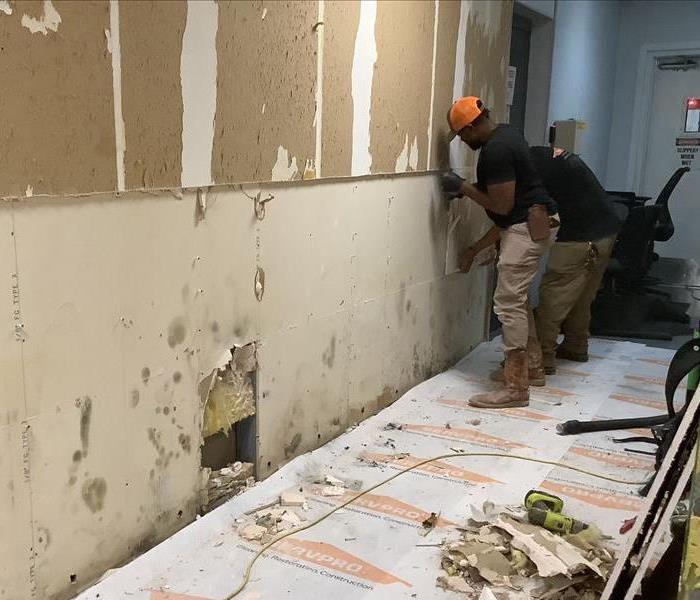Smoke Damage Cleaning Process Explained
3/1/2024 (Permalink)
Cleaning smoke damage can be a challenging task, but with the right approach, it can be effectively managed. Here's a general process for cleaning smoke damage:
Safety First: Before beginning any cleaning process, ensure your safety by wearing protective gear such as gloves, goggles, and a mask to avoid inhaling harmful particles.
Ventilation: Open all windows and doors to allow fresh air to circulate throughout the space. This will help dissipate lingering smoke odor and improve air quality.
Assessment: Evaluate the extent of the smoke damage to determine which areas require cleaning and restoration. Take note of surfaces, materials, and items affected by smoke residue.
Remove Soot and Ash: Use a vacuum cleaner with a brush attachment to gently remove loose soot and ash from surfaces. Avoid rubbing or pressing the soot into materials, as this can cause further damage.
Dry Cleaning: For light smoke residue on surfaces like walls, ceilings, and furniture, dry cleaning methods such as dry sponge or chemical sponge can be effective. These methods help lift away the soot without spreading it further.
Wet Cleaning: For heavier smoke residue, use a mild detergent solution and a sponge or cloth to gently scrub surfaces. Test the cleaning solution on a small, inconspicuous area first to ensure it doesn't cause damage or discoloration.
Specialized Cleaning Products: In some cases, specialized smoke damage cleaning products may be necessary. These can include degreasers, smoke odor neutralizers, and enzymatic cleaners. Follow the manufacturer's instructions carefully when using these products.
Steam Cleaning: Steam cleaning can be effective for removing smoke residue from carpets, upholstery, and other fabric materials. However, be cautious when using steam on delicate surfaces, as excessive heat and moisture can cause damage.
Cleaning HVAC Systems: Smoke can infiltrate HVAC systems, spreading odor and residue throughout the building. It's essential to clean and inspect HVAC ducts, filters, and vents to prevent smoke particles from circulating further.
Ozone Treatment: In severe cases where smoke odor persists, ozone treatment may be necessary. Ozone generators can help neutralize odor molecules by breaking them down at the molecular level. However, ozone treatment should only be performed by professionals, as exposure to high levels of ozone can be harmful.
Repainting and Restoration: In some instances, repainting walls and ceilings may be necessary to fully eliminate smoke odor and residue. Additionally, damaged materials may need to be replaced or restored to their pre-damage condition.
Professional Assistance: If the smoke damage is extensive or if you're unsure about the cleaning process, it's best to seek assistance from professional smoke damage restoration services. They have the expertise, equipment, and resources to effectively clean and restore your property.
By following these steps and taking appropriate safety precautions, you can effectively clean smoke damage and restore your property to its pre-damaged condition.






 24/7 Emergency Service
24/7 Emergency Service
